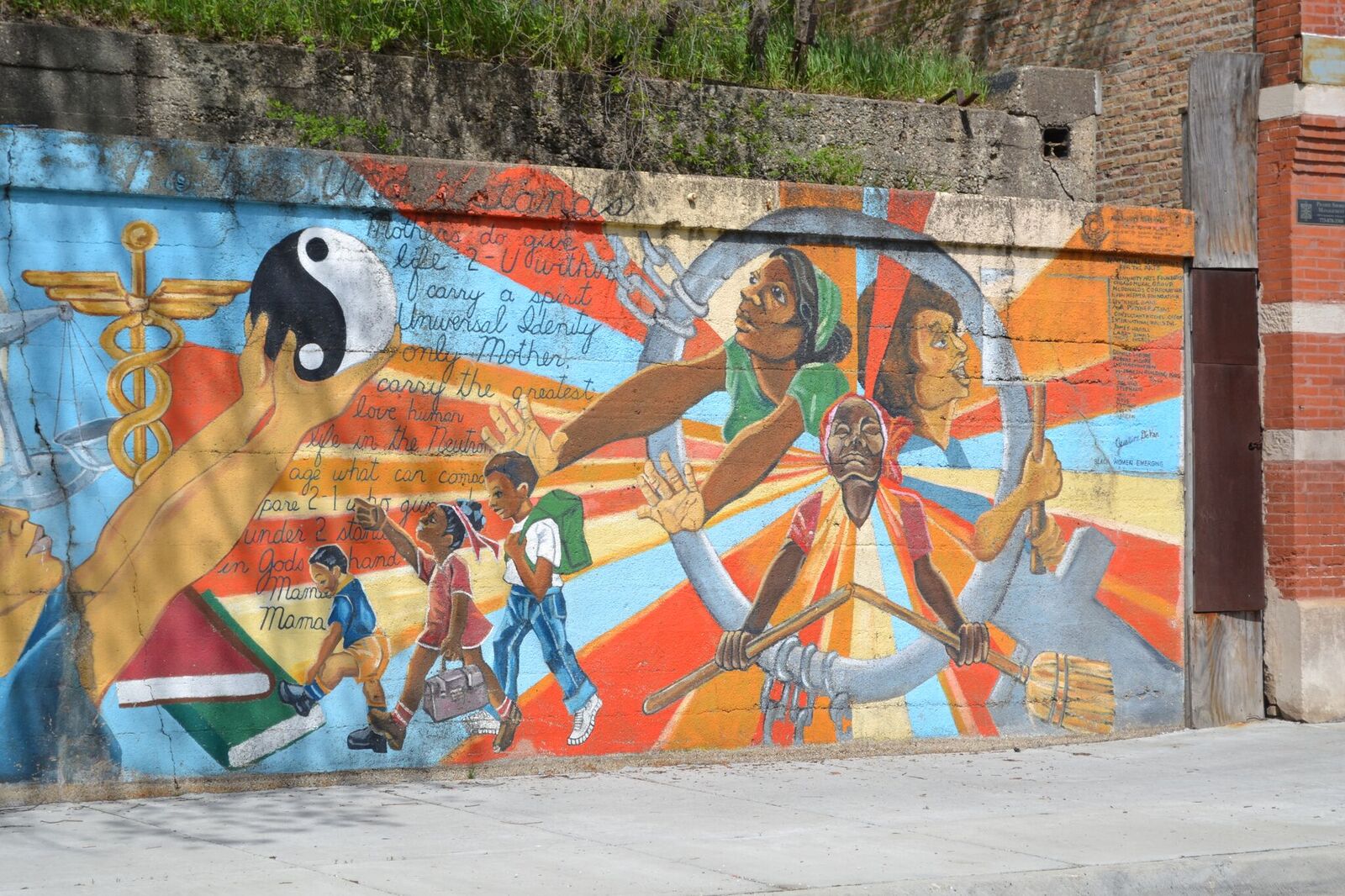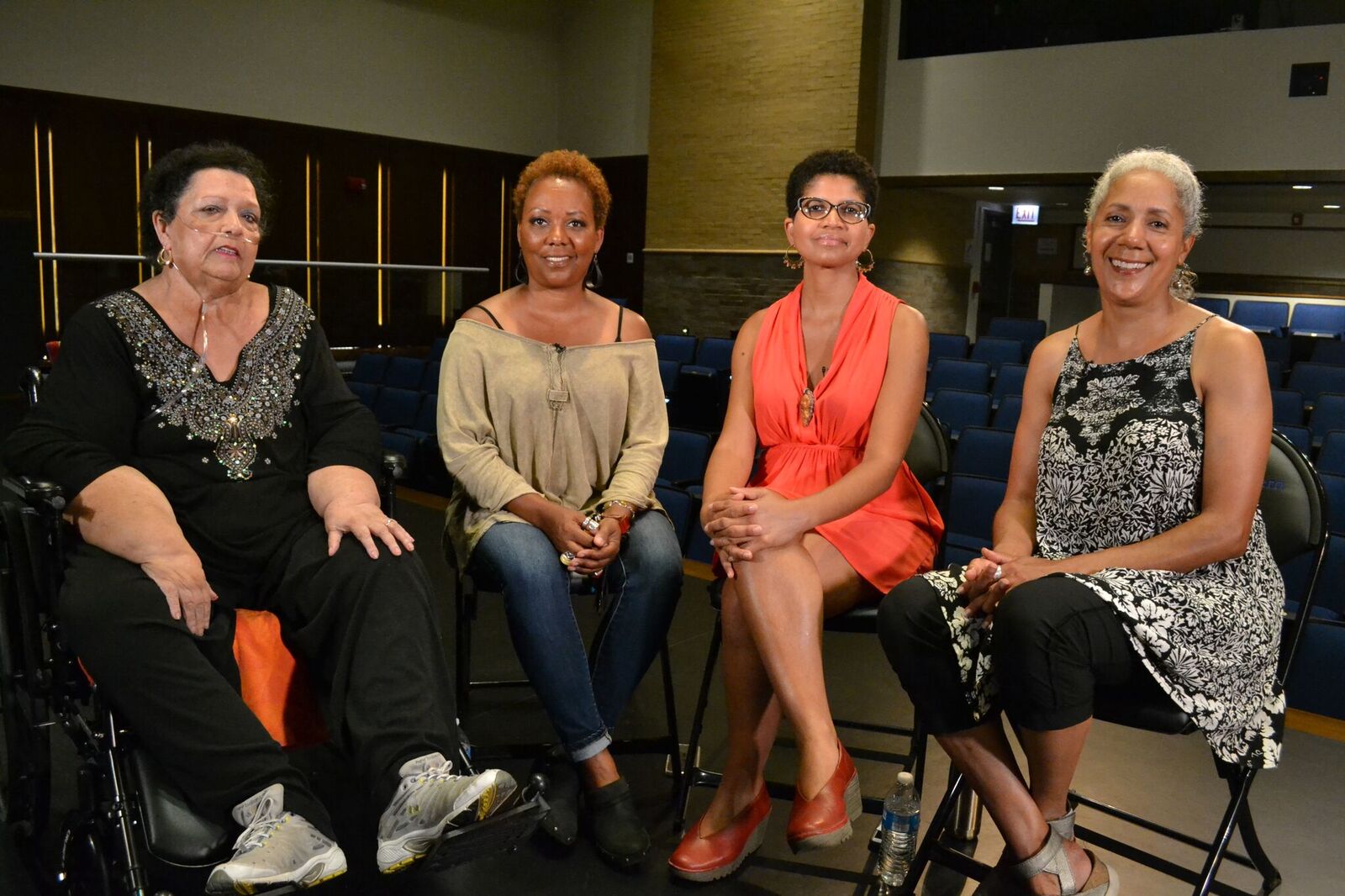

Murals that decorate the City of Chicago express the diversity intricately woven into the cultural fabric of the city. And a special feature titled “Art & Design Chicago” will showcase many of these creative murals and the stories they tell. The series will kick off on WTTW Channel 11 in October and run through November.
Described as a spirited celebration, “Art & Design Chicago” comes at a time when Black residents on the South and West sides of Chicago feel marginalized as other parts of the city prosper.
When asked why it was important to feature African-American artists in the documentary, Daniel Andries, writer and producer, replied, “This is Chicago. I’m not sure how you make a series titled ‘Art & Design in Chicago’ reflecting history stretching back into the 19th Century and not include, indeed not highlight, the art and experiences of African-Americans.”
He said the city was transformed by the arrival of more than a half million (African-Americans) people during the Great Migration.
“They and their descendants made a world rich with creativity, from writing and music to visual art. Important communities built up around groups of artists across time,” Andries added. “This city was home to Archibald Motley, Jr., Charles White, Margaret Burroughs, Elizabeth Catlett, William Walker, Eugene Eda, the artists of AfriCOBRA, the place where an artist like Kerry James Marshall moved to make a career. The South Side is alive with murals created by the artists of the Chicago Public Art Group, and others. I could go on and on. Let’s not forget that this is a city whose first permanent non-indigenous settler was Jean Baptiste Point du Sable, a Black man.”
Andries worked with advisors from universities and institutions around the country in choosing the artists featured in the documentary, which he said took two years to complete.
Each 30-minute special features narration by prominent local hosts and examines an aspect of the city’s creative past through stories centering on the themes of Chicago’s creative institutions, works by 20th century African-American artists, the city’s graphic designers, applied artists, industrial designers, and Chicago’s non-mainstream artists.
The series airs at 8:30 p.m. between Oct. 5 and Nov. 2. The series includes a companion website at wttw.com/artdesignchicago.
Wall of Respect
Chicago Muralist Dorian Sylvain, (taught by Wall of Respect artist Carolyn Lawrence) is featured in a segment on the “Wall of Respect.” Created August 1967, the iconic “Wall of Respect” mural was unveiled in Chicago’s Grand Boulevard community.
“As a young artist growing up in Chicago during the 1960s, I was exposed to all those artistic elements,” Sylvain said. “Displaying Black culture and pride back then, was considered militant and still is today. If you recall, the cornrow hairstyle was just accepted (in corporate America) not too long ago. During the 1950s, African-Americans were encouraged to assimilate into White culture. But during the 1960s, young Blacks said no to assimilation. We also had the voice of (R&B artist) James Brown releasing music that told us to ‘Say It Loud, I’m Black and I’m Proud.’”
Sylvain was seven years old when the “Wall” was painted.
“The artists who were involved in the creation of the Wall of Respect claimed the South Side wall at 43rd and Langley, and turned it into a project of self-expression with Black heroes and sheroes,” Sylvain said. “They were longing for real identity.”
History of the Black arts movement runs deep with Chicago Defender Newspaper founder and publisher, Robert Abbott Sengstacke, a member of the visual arts workshop of the Organization of Black American Culture (OBAC), photographing the “Wall of Respect” mural in 1967.
The photograph documents the “Wall of Respect,” conceived by one of OBAC founding members, William Walker, and completed in 1967 with the efforts of different artist contributions.
Created on a dilapidated tavern on a site earmarked for redevelopment, the 20-foot by 60-foot mural was located on the southeast corner of 43rd Street and Langley Avenue and reportedly was an important place for political gatherings, tourists’ pilgrimages, and other events featuring music, dancing and poetry.
Damaged by a reportedly “suspicious” fire in 1971, the mural no longer exists. The City of Chicago declared the site unsafe. The site today is a vast open space, with a commemorative plaque.
The documentary recreation features poet, author, educator, and publisher Haki R. Madhubuti, who participated in the 1967 “Wall” unveiling. The segment includes Ernest Dawkins and his band and other present-day residents recounting the mural’s impact on their community.


Black Women Emerging
The “Black Women Emerging” mural created at 4120 S. Cottage Grove by Justine De Van with the help of local residents is also featured in the series.
“Black Women Emerging” highlights images of an African dancer adorned with cultural emblems and a group of women rallying around the liberation flag. The mural calls on women to summon their ancestral strength in the struggle to break free from domestic servitude and gain access to all vocations in the pursuit of higher goals.
“Justine worked with prominent Black artists to create the ‘Black Women Emerging’ mural,” Sylvain said. “Her mural speaks to Black women evolving more into the things that had not been open to them. I’m pretty sure I’m going to get the project to restore the mural with funding from the Chicago Public Arts Group. It’s important to preserve the murals as the building blocks of our community. They speak to the issues and highlight our values. I give a lot of praise to Black artists like photographer Ronald West, who’ve documented the works of Black artists for the last 40 or 50 years. All of us have been moving forward. My hope is that we continue to encourage young Black artists. Dyett School can be used as a training ground for young people.”
Sylvain recently completed mural projects at Walter H. Dyett. The school in 2016, transformed from a traditional high school into a neighborhood school focused on arts.
Sylvain added that it’s great that Black artists are featured in the documentary.
“It’s an opportunity for us to speak for ourselves about Black photographers, film makers, muralists, all the Black artists, and what’s been happening with Black artists.”
Andries said, “Across time, Chicago’s artists and designers are as surprising, shocking, ordinary, complicated, raw, disturbing, striving, confident, retiring, proudly resistant, and eager to please as the city itself. Theirs are compelling stories that we hope will awaken viewers everywhere to the perplexing wonder of creativity that we live with every day in Chicago.”

The Series
The companion website at wttw.com/artdesignchicago will launch prior to Oct. 5 and will feature original content, interactive elements, a guide to highlighted works and video.
“ ‘Art & Design in Chicago’ delivers a diverse chorus of voices that attest to our city’s long and lasting legacy as a nexus of art and design, and presents a fresh and engaging narrative linking Chicago’s creative past to the present, propelling this remarkable story forward,” explained Elizabeth Glassman, Terra Foundation President and CEO.
The series is funded by the Terra Foundation for American Art and The Richard H. Driehaus Foundation.
The schedule and lineup follows:
If You Build It… airs Oct. 5 with Museum of Contemporary Art curator and host Naomi Beckwith who introduces stories of the 1893 World’s Columbian Exposition and sculptor Lorado Taft, told by artist Dessa Kirk and DePaul University’s Mark Pohlad; the School of the Art Institute (SAIC) through bios of six artists; the Institute of Design (ID); Exhibition Momentum, an annual exhibition organized by SAIC and ID students; the Southside Community Arts Center; and the Hyde Park Art Center.
The Black Metropolis of Art airs Oct. 12, hosted by artist Faheem Majeed, includes painter Archibald Motley, Jr., sculptor Marion Perkins; The Wall of Respect, a 1967 mural created by the Organization of Black American Culture, features Ernest Dawkins and his band. One of the world’s premiere saxophonist and composer, Dawkins is a member of The Association for the Advancement of Creative Musicians or (ACCM), a non-profit organization, founded in 1965 in Chicago by pianist/composer Muhal Richard Abrams, pianist Jodie Christian, drummer Steve McCall, and composer Phil Cohran; women in the Black Mural Movement; and ceramicist Marva Lee Pitchford-Jolly of the women’s artist collective Sapphire & Crystals, a collective of female African-American artists founded in 1987.
Give the Customers What They Want airs Oct. 26, hosted by Alisa Wolfson, head of design at Leo Burnett Chicago. Subjects include: typeface designer Robert Hunter Middleton; artist and advertising designer Charles Clarence Dawson; graphic designers Dorothy and Otis Shepard; Depression-era creator of high-end serving dishes, Helen Hughes Dulany; potter and wood carver, Jesus Torres; and television commercial director Joe Sedelmaier.
Off the Grid airs Nov. 2, hosted by muralist/educator Miguel Aguilar, who introduces painter Gertrude Abercrombie, with author Thomas Dyja and writer/artist Audrey Niffenegger; author/artist Henry Darger; the Hubbard Street Gallery Scene of the early 1970s; photographer Vivian Maier; and artist Joseph Yoakum.